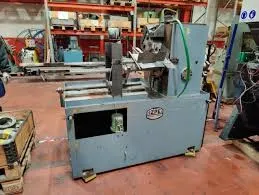
-
 Afrikaans
Afrikaans -
 Albanian
Albanian -
 Amharic
Amharic -
 Arabic
Arabic -
 Armenian
Armenian -
 Azerbaijani
Azerbaijani -
 Basque
Basque -
 Belarusian
Belarusian -
 Bengali
Bengali -
 Bosnian
Bosnian -
 Bulgarian
Bulgarian -
 Catalan
Catalan -
 Cebuano
Cebuano -
 Corsican
Corsican -
 Croatian
Croatian -
 Czech
Czech -
 Danish
Danish -
 Dutch
Dutch -
 English
English -
 Esperanto
Esperanto -
 Estonian
Estonian -
 Finnish
Finnish -
 French
French -
 Frisian
Frisian -
 Galician
Galician -
 Georgian
Georgian -
 German
German -
 Greek
Greek -
 Gujarati
Gujarati -
 Haitian Creole
Haitian Creole -
 hausa
hausa -
 hawaiian
hawaiian -
 Hebrew
Hebrew -
 Hindi
Hindi -
 Miao
Miao -
 Hungarian
Hungarian -
 Icelandic
Icelandic -
 igbo
igbo -
 Indonesian
Indonesian -
 irish
irish -
 Italian
Italian -
 Japanese
Japanese -
 Javanese
Javanese -
 Kannada
Kannada -
 kazakh
kazakh -
 Khmer
Khmer -
 Rwandese
Rwandese -
 Korean
Korean -
 Kurdish
Kurdish -
 Kyrgyz
Kyrgyz -
 Lao
Lao -
 Latin
Latin -
 Latvian
Latvian -
 Lithuanian
Lithuanian -
 Luxembourgish
Luxembourgish -
 Macedonian
Macedonian -
 Malgashi
Malgashi -
 Malay
Malay -
 Malayalam
Malayalam -
 Maltese
Maltese -
 Maori
Maori -
 Marathi
Marathi -
 Mongolian
Mongolian -
 Myanmar
Myanmar -
 Nepali
Nepali -
 Norwegian
Norwegian -
 Norwegian
Norwegian -
 Occitan
Occitan -
 Pashto
Pashto -
 Persian
Persian -
 Polish
Polish -
 Portuguese
Portuguese -
 Punjabi
Punjabi -
 Romanian
Romanian -
 Russian
Russian -
 Samoan
Samoan -
 Scottish Gaelic
Scottish Gaelic -
 Serbian
Serbian -
 Sesotho
Sesotho -
 Shona
Shona -
 Sindhi
Sindhi -
 Sinhala
Sinhala -
 Slovak
Slovak -
 Slovenian
Slovenian -
 Somali
Somali -
 Spanish
Spanish -
 Sundanese
Sundanese -
 Swahili
Swahili -
 Swedish
Swedish -
 Tagalog
Tagalog -
 Tajik
Tajik -
 Tamil
Tamil -
 Tatar
Tatar -
 Telugu
Telugu -
 Thai
Thai -
 Turkish
Turkish -
 Turkmen
Turkmen -
 Ukrainian
Ukrainian -
 Urdu
Urdu -
 Uighur
Uighur -
 Uzbek
Uzbek -
 Vietnamese
Vietnamese -
 Welsh
Welsh -
 Bantu
Bantu -
 Yiddish
Yiddish -
 Yoruba
Yoruba -
 Zulu
Zulu
Exploring Different Types of Thread Rolling and Their Price Ranges
Understanding Types of Thread Rolling and Their Price List
Thread rolling is a vital manufacturing process used to produce threads on fasteners, bolts, and other components. This method is preferred over traditional cutting techniques due to its ability to create stronger, more precise threads while reducing material wastage. Understanding the various types of thread rolling methods and their corresponding price lists is crucial for manufacturers and engineers looking to optimize their production processes.
Types of Thread Rolling
1. Flat Die Thread Rolling This is one of the most common methods used for thread rolling. In this process, the workpiece is placed between two flat dies that can either be stationary or rotating. As the dies press against the workpiece, they deform the material, creating threads. This method is ideal for producing large volumes of fasteners due to its high efficiency and speed. The price for flat die thread rolling machines can vary significantly based on size, brand, and features, typically ranging from $10,000 to $50,000.
2. Rotary Thread Rolling This technique involves rolling the workpiece between two cylindrical rollers that rotate in opposite directions. Rotary thread rolling is suitable for longer and larger components. It provides a smooth finish and maintains thread integrity, making it ideal for high-strength applications. The cost associated with rotary thread rolling machines can range from $15,000 to $60,000 depending on the machine's capabilities.
3. Reciprocal Thread Rolling In this method, the workpiece is moved back and forth against the rolling dies, allowing for intricate thread patterns. This technique is less common but can be very effective for specialized applications. The machines for reciprocal thread rolling can be less expensive, typically starting around $8,000 and going up to $30,000.
types of thread rolling pricelist

Factors Affecting Price
The price of thread rolling machinery is influenced by several factors
- Machine Type As discussed, different types of machines cater to various production needs, leading to price variations. - Size and Capacity Larger machines with higher production capacities tend to be more expensive due to the additional materials, engineering, and technology involved in their construction. - Brand and Manufacturer Well-known brands often command higher prices due to their reputation for quality and reliability. Investing in a trusted manufacturer can lead to better long-term performance and lower maintenance costs.
- Technological Features Machines equipped with advanced technology, such as automatic feeders and programmable controls, can be more costly but offer greater efficiency and ease of use.
Conclusion
The choice of thread rolling method and associated machinery ultimately depends on the specific needs of a production line. By understanding the different types of thread rolling techniques and their price ranges, manufacturers can make informed decisions that align with their operational requirements and budgets. Investing in the right equipment not only enhances production efficiency but also ensures the production of high-quality threaded components that meet rigorous industry standards. Whether you are a small-scale manufacturer or part of a large industrial operation, knowing the nuances of thread rolling can provide a significant competitive edge in the market.
